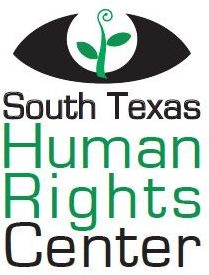Sacred Heart Cemetery, Falfurrias, Texas: For the second consecutive summer, a team of forensic scientists and their students from the Baylor University and the University of Indianapolis participated in exhuming the remains of unknown migrants from the Sacred Heart Cemetery in Falfurrias, from June 1 – 11. Dr. Lori Baker and Sgt. Jim Huggins, from Baylor University, and Dr. Krista Latham from the University of Indianapolis engaged about 30 graduate and undergraduate students in the process of searching and unearthing a total of 50 human being remains. The students signed up with Dr. Baker in a course that combines biology, anthropology, physical science and other related fields of study. With shovels of all sizes, gloves, small brooms and other tools, the students and professors worked persistently and methodologically to remove the soil, probe, locate the remains, and transfer each in a body bag, carefully catalogued and reported in notebooks and photographed accordingly. Very little is known about the migrants; only that they were border crossers and met their fate while trekking through the Brooks county’s rough, thorny brush terrain, and perhaps, coupled with the scorching summer heat took their lives one way or another. The teams’ main goal is to identify the corpses or their remains, and ultimately match them with their loved ones.



The Cemetery
At the outset, the team members were aware of the lack of information on the number of “unknown” migrants and where exactly they were buried. According to the Sheriff’s Department staff member Leonel Muñoz, the burials date back to 2005, but there may be even older remains since the plot was also used for pauper burials and its initial construction dates back to the 50’s. Last summer, Dr. Baker and team members exhumed about 60 corpses in another section of the cemetery, so they were prepared for the unexpected. At the time the corpses were buried, funeral homes that provided burial preparations didn’t thoroughly and correctly examine the corpses, thus their identities were literally buried and forever forgotten. Until, Chief Deputy Benny Martínez recognized the problem.
Finding the Resources


Sheriff’s Chief Deputy Martínez runs his department on a very tight budget due to the allocation formula of State and County funds that favor counties closer to the Mexican-US border. (Brooks County is in the central area of South Texas’ 13 counties.) His strategy of searching and procuring resources paid off when he was introduced to Baylor’s Dr. Lori Baker by a San Antonio journalist, Jessie Degollado (with KSAT-TV). Ms. Degollado had met Dr. Baker about 10 years ago and was familiar with her work in exhuming corpses in Del Rio, TX. In the summer of 2013, Dr. Baker and the Forensic Team began the exhumation project, and their return this summer was largely due to its initial success.
Reuniting Families Project (RFP)
Dr. Lori Baker founded the consortium, Reuniting Families Project in 2003 with the purpose of recovering the remains of unidentified individuals, many of who were border crossers or migrants, from cemeteries along the México/US border. The RFP scientists (Dr. Lori Baker, Sgt. Jim Huggins, Dr. Krista Latham, and Dr. Kate Spradley from Texas State University conduct forensic anthropological analysis on the remains, including DNA samples, and enter this information into national databases that can ultimately lead to the identification of the deceased and the notification of this finding to the closest relative. Whereas the analyses of the remains are eventually available, especially the DNA, there is a lack of sufficient databases by which to compare and match the DNA. Even though some cooperation with Mexico’s Secretaría de Relaciones Exteriores, Ministry of Foreign Affairs has produced a database system (System for the Identification, Reunification, and Localization of Individuals or SIRLI), a frustration persists in producing sufficient matches between the missing and their loved ones. (See 2005 Press Conference with Marco Antonio Fraire.) The number of calls by family members looking for their loved ones is overwhelming for an ill-equipped and understaffed agency. Additionally, an increasing amount of Central Americans are amongst the deceased and a consistent cooperative strategy between the countries and the US agencies has yet to fully materialize. (Other resource link: “Exhuming Immigrant Remains: Reuniting Families Program”)
Working in the Right Direction

Despite the information gaps and the paucity of resources, the process undertaken by the University Teams for identifying the human being remains of migrants is a significant step in the right direction. After the exhumation phase of the project, Dr. Baker and team members and students return to their prospective universities to analyze the recovered remains and proceed with the identification and reunification processes. With their help and expertise, the “unkowns” buried in the Falfurrias cemetery may at last be reunited with their loved ones.
See related story: “University Professors Lead by Example” in this blog.
See related story: “University Students Learn Life-Long Lessons” in this blog.

